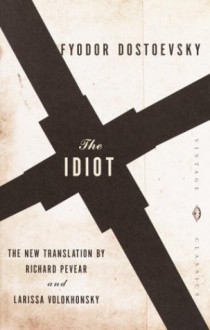
Thanks to Rosie Croft from Pen & Sword for providing me a hardback copy of this book that I freely chose to review.
Let me clarify something from the very beginning: the book includes an ample biography and online resources for people interested in genealogy and doing their own research about the origins of their family (and an index to find specific information as well), but it is not a book where most British people (or people with British roots) are likely to find their direct ancestors. (Oh, by the way, because of the many historical changes and the way members of a family have moved across over the years, although the book centres on Great Britain, it does include both, Northern Ireland and the Republic of Ireland). The author explains, in his foreword, his method, including the documents he based most of his information on (oh, taxes and taxation documents are older than we realise, The Domesday Book features prominently, and quite a few others), and also his choices. As he explains, this book is only a snapshot and tries to include names of families who’ve played pivotal roles in the history of the country. Some are already lost, but many remain familiar, be it because of history books or, in some cases, because their descendants still play important roles that help maintain them under the limelight (in some cases, quite literally).
I am not British, have no British ancestors that I know of, and my interest in the book was mostly for reference. As an avid reader and writer, I am always intrigued by the historical connections between characters and families, and also by names. I’ve often read interviews with authors where they explain their process when researching the names of their characters and how, on many occasions, they look for names whose meaning or connections can become significant to the story, even symbolic at times. Although I haven’t done that too often, I must confess to struggling with surnames sometimes, and I can imagine this will be a much bigger concern for authors who write historical fiction. This book, divided into ten chapters covering the whole of Great Britain geographically, is a great starting point. It links the family names to their seats and areas by zones, including information on the origin of the name (many came with William the Conqueror from France, or followed shortly after, but not all), how the family fared later, the houses and titles they had, where the different branches of the family ended up, and where are they now (if there are any members of the family still connected to the name). Although it does not include all the details, it does mention members of the family who moved to Australia, America, etc., so it will be of interest to people from those countries aware of family connections and also to people interested in history and the ins and outs of the connections between noble and aristocratic families in the UK.
One of the things that grabbed my attention, and I hadn’t thought about before, was the information about the mansions, palaces, and houses that had belonged, at one point or other, to the members of those families. I love to visit historical houses (and the National Trust and National Heritage in the UK have done a great job of maintaining and restoring many of those properties and opening them up to visitors), and as I read, I discovered information about the owners of many of the properties I had visited over the years, some I was familiar with, but some that was totally new to me. I knew, for instance, that the Howard family’s (of Norfolk, yes, Thomas Howard, the uncle of Anne Boleyn and Catherine Howard, that Howard family) seat was Arundel Castle (a beautiful Grade I listed building I recommend visiting. Don’t miss the Canaletto painting), and I knew they were related to the Howards of Castle Howard in North Yorkshire, one of my favourite places. (If you’ve watched the Granada Television adaptation of Brideshead Revisited, Castle Howard is Brideshead in that series and in a more recent movie adaptation. If you haven’t watched it, what are you waiting for? It’s a masterpiece!). I enjoyed learning more about the family, reading about the Fiennes Family of Banbury (a very illustrious and busy family, with current members of branches of the family as well-known as William Fiennes, author; Sir Ranulph Fiennes, explorer; Ralph and Joseph Fiennes, actors; and travel writer Celia Fiennes). The Russell (Roussel or Rosel) Family of Dorset has produce over the years members of parliaments, a Prime Minister (John Russell), and Bertrand Russell, Nobel Prize for Literature, and many more.
If I had to make any recommendations to the author and the publisher, it would be to consider including some family trees. I know there are far too many names and families to be exhaustive, but the family trees of some of the most significant family names —with many branches and connections— would make for fascinating visual documents and clarify how closely-knit some of those family circles are. Photographs of some of the family seats, the wonderful mansions, castles and properties, would also enhance the appeal of the book and make it visually more exciting.
I recommend this book to authors, historians, and researchers looking for general information about the big British families and their origins, and also to people interested in learning more about an area’s history and about how the ownership of the big properties in a region have changed over time.

 Log in with Facebook
Log in with Facebook 









